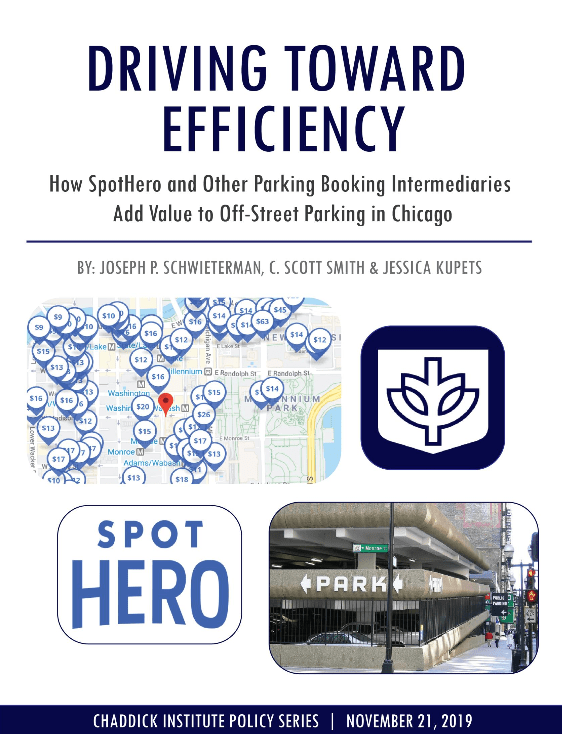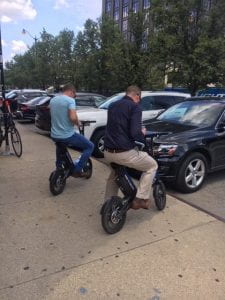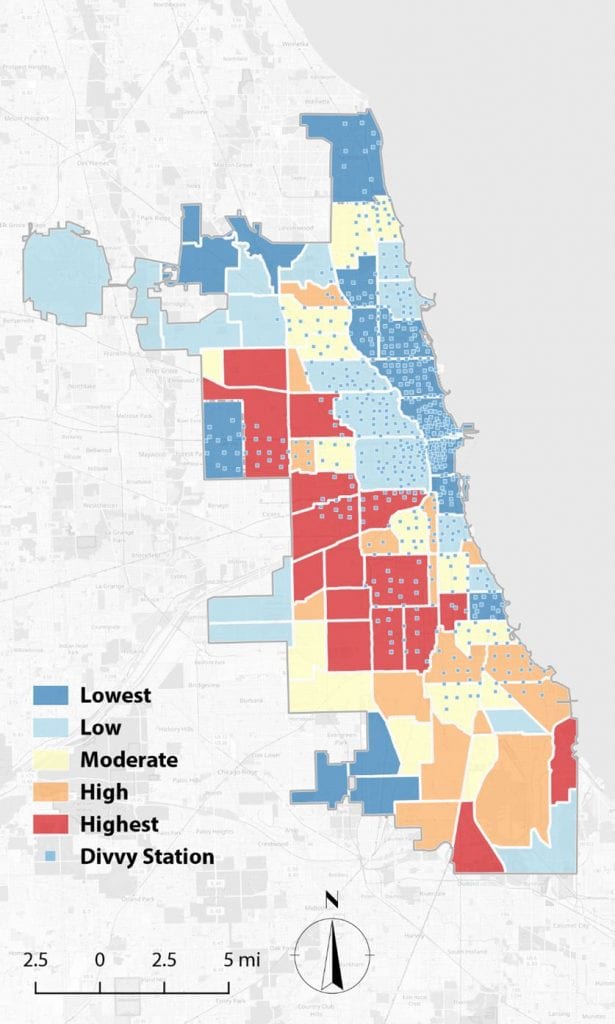When having to drive to downtown Chicago or other parts of the city, the most frustrating detail is oftentimes finding a place to park your car. Like many other travelers, you may spend time roaming block to block, searching for an available, convenient and low-cost location.
Even when you act as a conscientious trip planner and, prior to departure, compare options posted on various parking facility websites, you are likely to find that most provide standard parking rates but not always options to reserve a space, extend your stay or check availability.
The Chaddick Institute for Metropolitan Development’s recent study, Driving Toward Efficiency, examines the impact of parking booking intermediaries–such as SpotHero, Parking Panda, ParkWhiz and Best Parking–and the degree to which these online platforms help foster the efficient allocation of parking.
The study begins with a review of common problems associated with private off-street parking and carries out various geographic analyses comparing the prices as advertised via these intermediaries with more traditional parking options in Chicago, including on-street parking meters. Overall, the study finds that parking booking intermediaries help operators maximize inventory, provide flexible, cost-efficient options for drivers and more closely align their decisions with public goals.
The study finds that parking intermediaries add to the quality of the parking experience by creating user-friendly platforms that ease the drivers’ selection and reserving of parking spaces. The table below shows conveniences and information available on booking intermediaries versus parking operator websites. For example, our analysis indicates that more than 20% of facilities listed on SpotHero do not offer the option to pre-purchase a reservation on the official website of the parking facility operator and some do not have websites at all. For these facilities, of course, various online conveniences are also not available, such as extending reservations without returning to the facility, obtaining a lost receipt by logging in to a digital account, or checking out customer reviews of the facility.
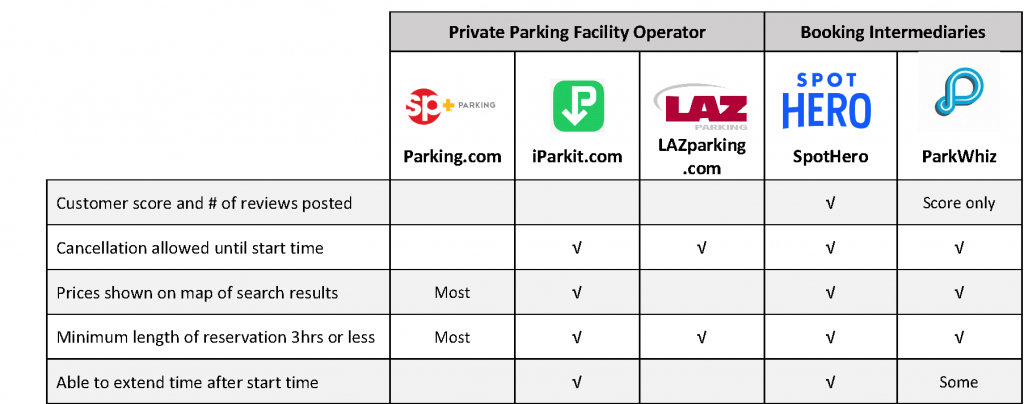
The study also utilizes datasets from different sources in order to visualize and compare both on-street and off-street facilities within the city. Researchers extracted parking price and location data from the SpotHero website for 499 listings. The Chicago Parking Meter API endpoint was also used to identify associated locations and rates for on-street parking. To compare on- and off-street prices, the weighted average of hourly rates were calculated for all parking meter spaces located within a 200m buffer of each facility listed on SpotHero. (Thanks to Steve Vance for guidance on how to access relevant Chicago Parking Meters, LLC data.) The map below shows the distribution of parking facilities listed on SpotHero and their associated prices relative to Chicago’s parking meters expressed in hourly rates. Facilities represented as red circles have hourly SpotHero rates greater than nearby parking meters whereas facilities represented with green circles have SpotHero rates that are less than parking meters.
Overall, the two options are rather cost competitive, with a slightly higher share of facilities shaded red on the map (50 percent) compared to green (44 percent). This suggests that, in some cases, on-street parking can still be a more cost-efficient option compared to off-street parking if the location and parking restrictions (i.e., all Chicago parking meters have a two-hour maximum stay) align with the driver’s trip.
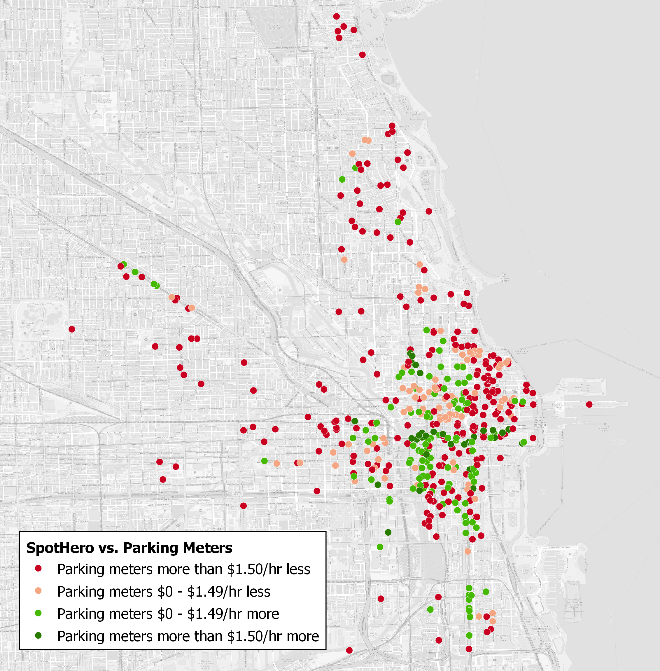
For more information and findings, please read the entire report. We also encourage you to post your questions and comments below.
